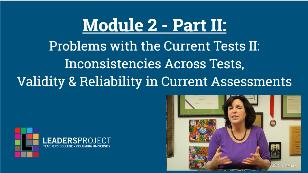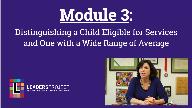by okv2000 | Feb 8, 2025
In this video, Melissa Farkouh, M.Sc., a speech-language pathologist from Canada, provides a brief tutorial on accessing the newly translated PRE-SLAM materials in French. She also explains how evaluators can effectively use these materials in dynamic assessments, designed for children from preschool to seven years old.
by okv2000 | Feb 8, 2025
In this video, Olivia Volmar, a student at Teachers College, Columbia University, provides a brief tutorial on how to access the newly translated PRE-SLAM & SLAM materials in Haitian Creole. She additionally provides a description about how evaluators can best used these materials in dynamic assessment.
by Leaders Project | Feb 16, 2024
This is a video created in English, to demonstrate the use of AAC Market Cards in aiding children from Ghanaian families to participate in typical activities to help out their families.
by Leaders Project | Feb 15, 2024
This is a video created in English, to provide guidance on creating social stories similar to those created by Carol Grey.
by Kristin | Aug 30, 2016
In this playlist, Dr. Cate Crowley walks Early Intervention Evaluators through critical steps in conducting an Early Intervention evaluation considering current federal law, state regulations, clinical judgment, and evidence-based practice.

by Kristin | Aug 27, 2016
In this module, Cate continues discussing current issues of misuse of current standardized EI assessments. She then examines across-test inconsistencies across tests like the REEL-3, the Rossetti, Bayley-III, E-LAP, Brigance, DAY-C, amongst others. Finally, Cate will take a deeper look at the validity and reliability of these common assessments, and caution evaluators to rely on more than a standard score in determining disability eligibility for children before the age of three.

by Kristin | Aug 27, 2016
In the third module of this series, Cate looks at the NYSDOH Communication and Motor Clinical Practice Guidelines and uses case study videos of young children to demonstrate how detailed observation and informed clinical opinion can be powerful tools in doing an EI evaluation. Using observation of real children’s behavior, she guides the viewer through the steps for distinguishing a child eligible for EI services from a child in the wide range of “normal”.

by Kristin | Aug 27, 2016
In the fourth module of this series, Cate explains the importance of parents as partners in EI disability evaluations. She presents research-based Critical Questions that evaluators can use to gather useful information from caregivers when evaluating a child, including information about the child’s language and dialect acquisitional history. Cate also presents the case of a 2.8-year-old boy, Alex, to demonstrate how to use the clinical questions to gather information and write up a quality EI evaluation.

by Kristin | Aug 27, 2016
In the fifth module of this series, Cate discusses characteristics of a quality Early Intervention evaluation. She explains that evaluators must include specific data learned during the assessment and make “vignettes” or “holograms” paint a picture of the child. Then, she guides us through cases of real children, demonstrating how to use informed clinical opinion to make rich observations about their communicative, cognitive, and motor functioning. Finally, Cate gives examples of what a “vignette” or “hologram” looks like in a written evaluation.

by Kristin | Aug 27, 2016
In the sixth module in this series, Cate presents research on bilingualism in children 0-3 years of age and explains when a bilingual evaluation is necessary in Early Intervention. She goes over essential skills that every bilingual evaluator should have and talks in-depth about how to work with an interpreter in a culturally and linguistically appropriate way. Finally, Cate presents case studies of bilingual children under the age of 3 that demonstrate the influence of bilingualism on early language development.






![[feed link]](/wp-content/plugins/rss-just-better/rss-cube.gif)